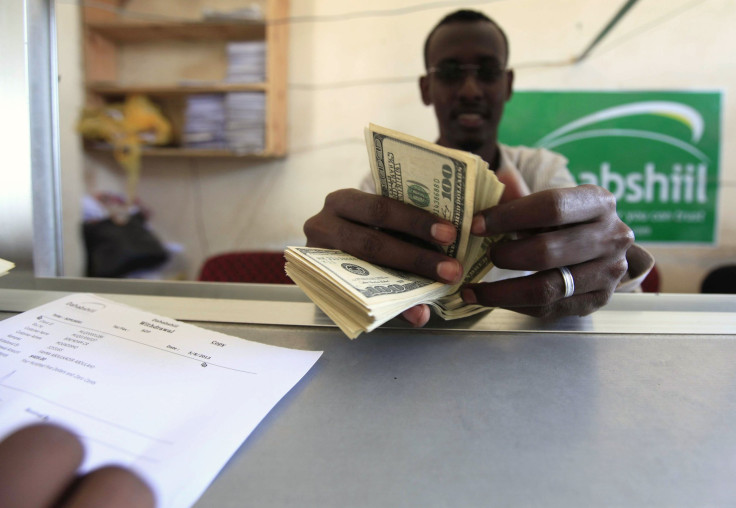US Foreign Aid: Washington Gives Billions, But Is It Money Well Spent?

When reports emerged that tens of thousands of children had crossed the U.S.-Mexico border by themselves since October, Rep. Randy Weber, R-Texas, proposed legislation to freeze most U.S. foreign aid to Guatemala, Honduras and El Salvador, where the majority of the children come from, and also Mexico for letting the children through.
Joined by 11 other members of Congress, Weber said the bill would hold these countries accountable for the unprecedented number of undocumented children flowing north into the United States. The funds would remain frozen until Congress deemed the problem solved. But some experts say that holding back foreign aid funds wouldn’t have its intended effect.
“This would undoubtedly make the situation much worse” Ana Quintana, a research fellow at the Heritage Foundation, told the International Business Times earlier this week.
Weber’s proposal would continue support for programs under the International Narcotic Control Law Enforcement but would pull funding from some badly needed anti-crime initiatives, Quintana said. Without U.S. foreign assistance, the security situation could easily deteriorate. And most of the funds provided to these countries go towards agriculture and infrastructure -- important economic sectors. Cutting these initiatives would only increase the flow of people fleeing these countries.
There are misconceptions about how U.S. foreign aid works, said Quintana. While sometimes it is just cash shipped in shrink-wrapped bundles, most goes directly to military and economic programs, and the rationale for the spending is less humanitarian than strategic. Supporters see foreign aid as a worthwhile investment that has potentially saved thousands of lives.
Still, opponents of foreign aid contend that it is prone to corruption and waste and that aid can drag nations into a cycle of dependence. Jesse Helms, the North Carolina Republican senator who served on the Foreign Relations Committee, once compared foreign aid to “pouring money down foreign rat holes.”
Reports of mismanagement and pervasive corruption -- Afghans flying off with suitcases of foreign aid cash to buy luxury villas in Dubai or Ugandan Prime Minister Patrick Amama Mbabazi forced to apologize when his staff stole $13 million in aid money -- feed the perception that foreign aid is not money well spent.
Many fiscal conservatives have been skeptical of giving money to the rest of the world. Senator Rand Paul has repeatedly suggested cutting foreign aid to Israel, Egypt and Pakistan and gradually ending it in entirety. And more recently, Rep. Paul Ryan, R-Wis., proposed slashing the foreign aid budget in favor of raising national defense spending.
According to a poll conducted by the Kaiser Foundation last year, most Americans think foreign assistance uses up 28 percent of the national budget, while in reality it makes up less than 1 percent. And six out of 10 Americans thought the U.S. expends too much on foreign aid.
The U.S. State Department began releasing data on foreign aid distribution in June in an effort to bring transparency and accountability to a process that has historically been anything but.
IBTimes mapped out U.S.foreign aid. Click on a country to see how much it received directly from the U.S. and what for.
Over the last 10 years, the U.S. has given money to 185 countries, even ones that it doesn’t normally get along with like Cuba, Russia and China. The most substantial chunk of these funds has gone to three countries, Afghanistan, Iraq and Pakistan. Together they received more than $30 billion, which totaled more than 30 percent of all foreign aid distributed. But while these funds mainly financed initiatives to improve security, most of the foreign assistance that the U.S. distributes goes towards more humanitarian fights.
The State Department divides all foreign assistance into nine basic categories. Click each column to see how each category breaks down and how much was spent in each.
Most of U.S. foreign assistance has been spent combating public health threats. The U.S. spent more than $17 billion over the last five years attempting to halt the spread of HIV/AIDS and treat the 35 million people the World Health Organization estimates are currently living with the disease. AIDS/HIV deaths have fallen by thirty percent and the number of new cases by more than twenty percent, according to statistics collected by the WHO.
Despite the billions of dollars the U.S. distributes, the International community has criticized the U.S. for not giving more. In terms of dollars, the U.S. is by far the biggest source of foreign aid funds. But when comparing the percentage of the budget allocated, the U.S. barely makes the top 20, according to the Organization of Economic Co-Operation and Development, an international economics group.
Meanwhile, a special advisor to the United Nations and the head of UNITAID, a U.N. public health initiative, Philippe Douste-Blazy, told EurActiv, a European policy publication, that without a more innovative approach to foreign aid, the U.N. would fall short of the anti-poverty and health goals.
In 2012, former Rep. Howard Berman, who chaired the House Committee of Foreign Affairs, and Rep. Gerald Connolly introduced the Global Partnership Act, a 923-page proposal to institute sweeping changes to the way the U.S. distributes foreign aid, in an effort to make it transparent, accountable and efficient. The bill died in committee. Connelly re-introduced the bill in 2013 but according to govtrack.us, the bill has 0 percent chance of being enacted.
Estimates give Weber’s bill a 3 percent chance of being signed into law.
© Copyright IBTimes 2025. All rights reserved.





















